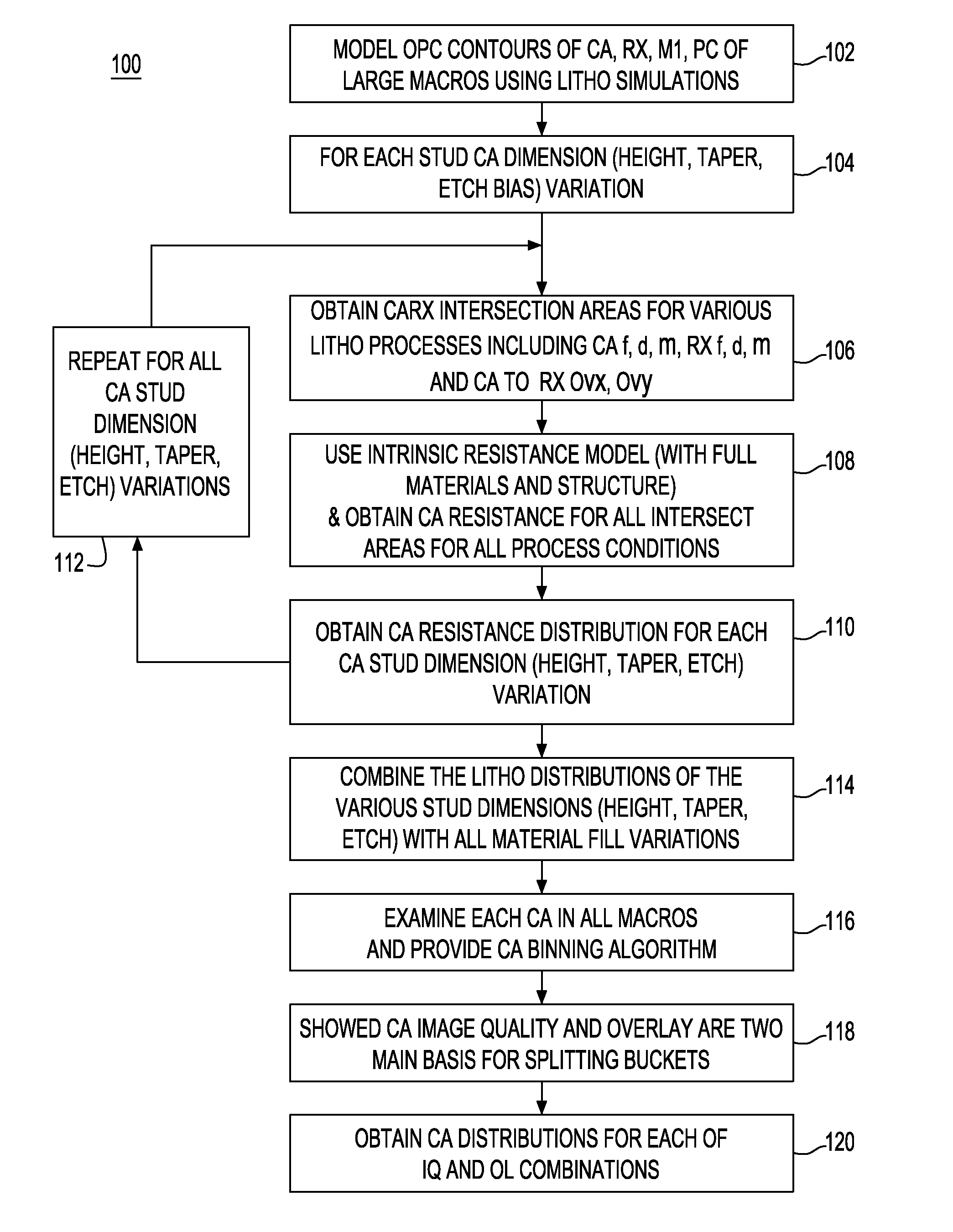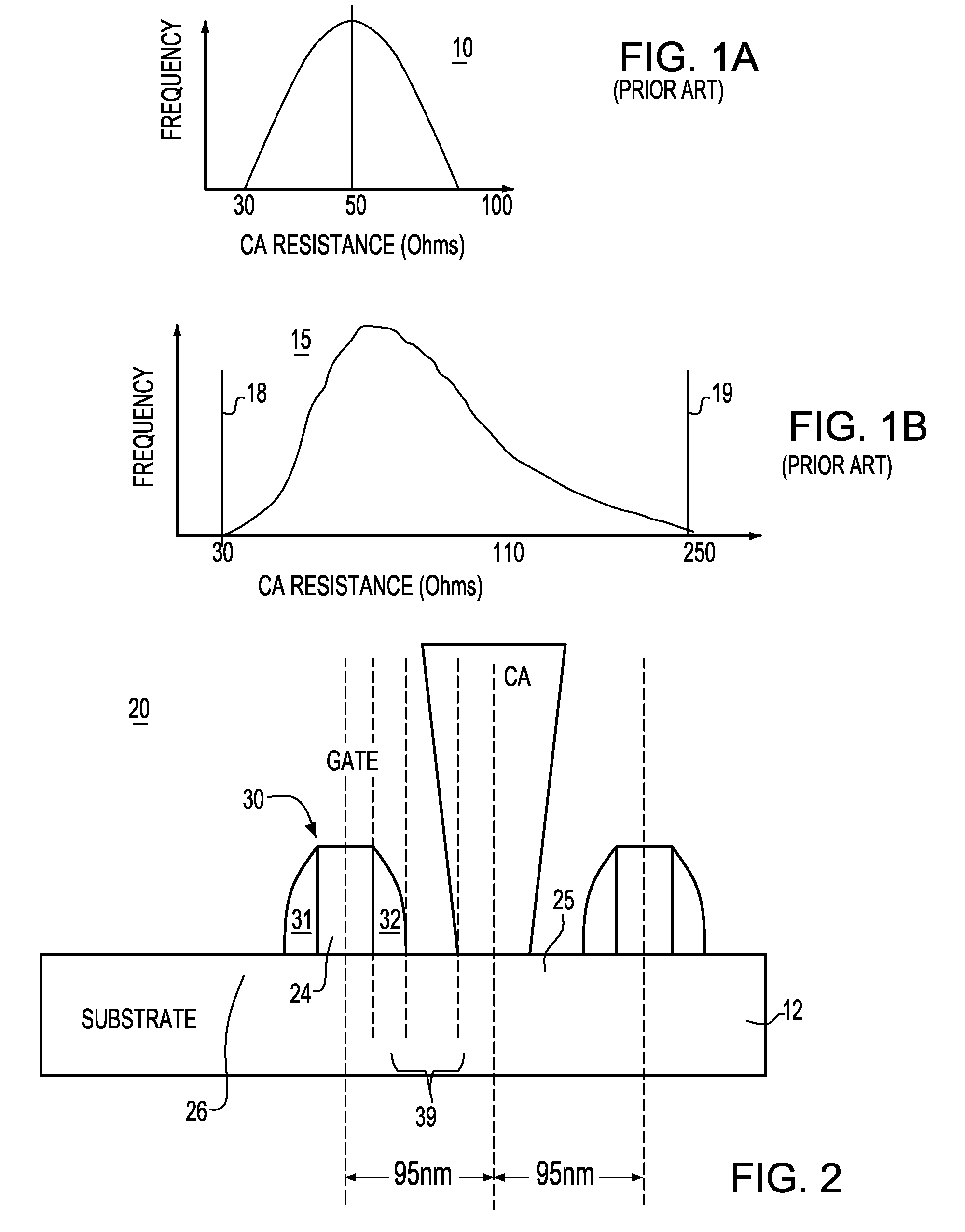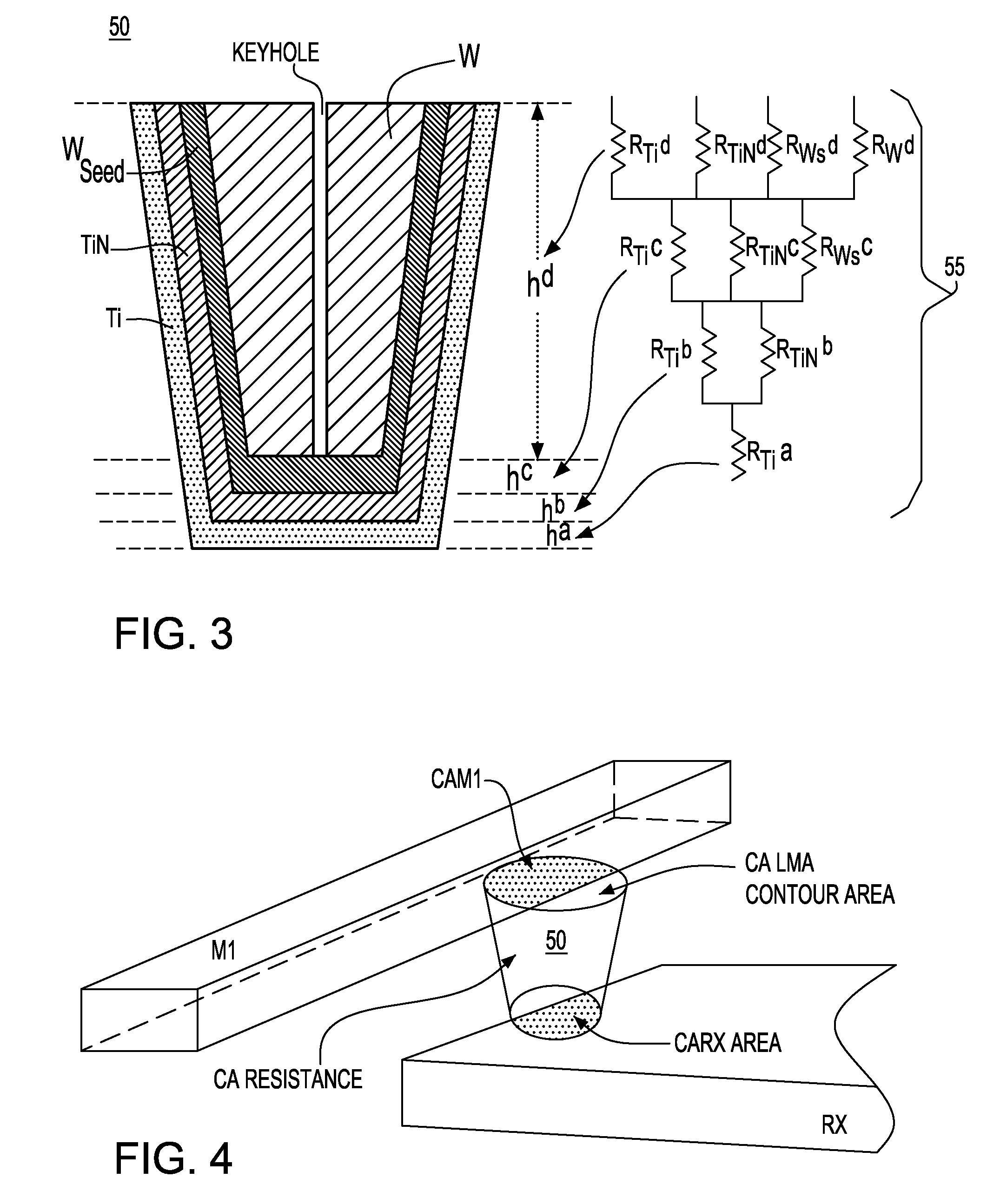CA resistance variability prediction methodology
a resistance variability and prediction method technology, applied in the field of semiconductor circuit design and circuit performance modeling, can solve the problems of increasing variability with ever shrinking, affecting the accuracy of circuit design, and difficult to estimate the endpoints of the curve b>18/b> and b>19/b>, especially the upper curve endpoint b>19/b>
- Summary
- Abstract
- Description
- Claims
- Application Information
AI Technical Summary
Benefits of technology
Problems solved by technology
Method used
Image
Examples
Embodiment Construction
[0051]The present invention is directed to a methodology and algorithm to obtain a dramatically improved prediction of CA (Contact Via) resistance in electronic circuits; particularly, an improved CA resistance model adapted to capture larger than anticipated “out of spec” regime.
[0052]The novel algorithm and methodology implemented for improving CA resistance variability provides model results that can be codified and released through a Design Manual. In one aspect of the invention, a novel CA bucketization model is implemented, that, as will be described in greater detail herein, provide model results in the form of CA buckets and the respective resistance means / sigmas. In order to facilitate development of devices at the 45 nm and 32 nm technology level, these model results have to be added to the model / extraction suite and design kits and consequently, therefore have to facilitate extraction vendor tool developers (for tools such as Calibre, Assura, Hercules, etc.).
[0053]In one ...
PUM
 Login to View More
Login to View More Abstract
Description
Claims
Application Information
 Login to View More
Login to View More - R&D
- Intellectual Property
- Life Sciences
- Materials
- Tech Scout
- Unparalleled Data Quality
- Higher Quality Content
- 60% Fewer Hallucinations
Browse by: Latest US Patents, China's latest patents, Technical Efficacy Thesaurus, Application Domain, Technology Topic, Popular Technical Reports.
© 2025 PatSnap. All rights reserved.Legal|Privacy policy|Modern Slavery Act Transparency Statement|Sitemap|About US| Contact US: help@patsnap.com



